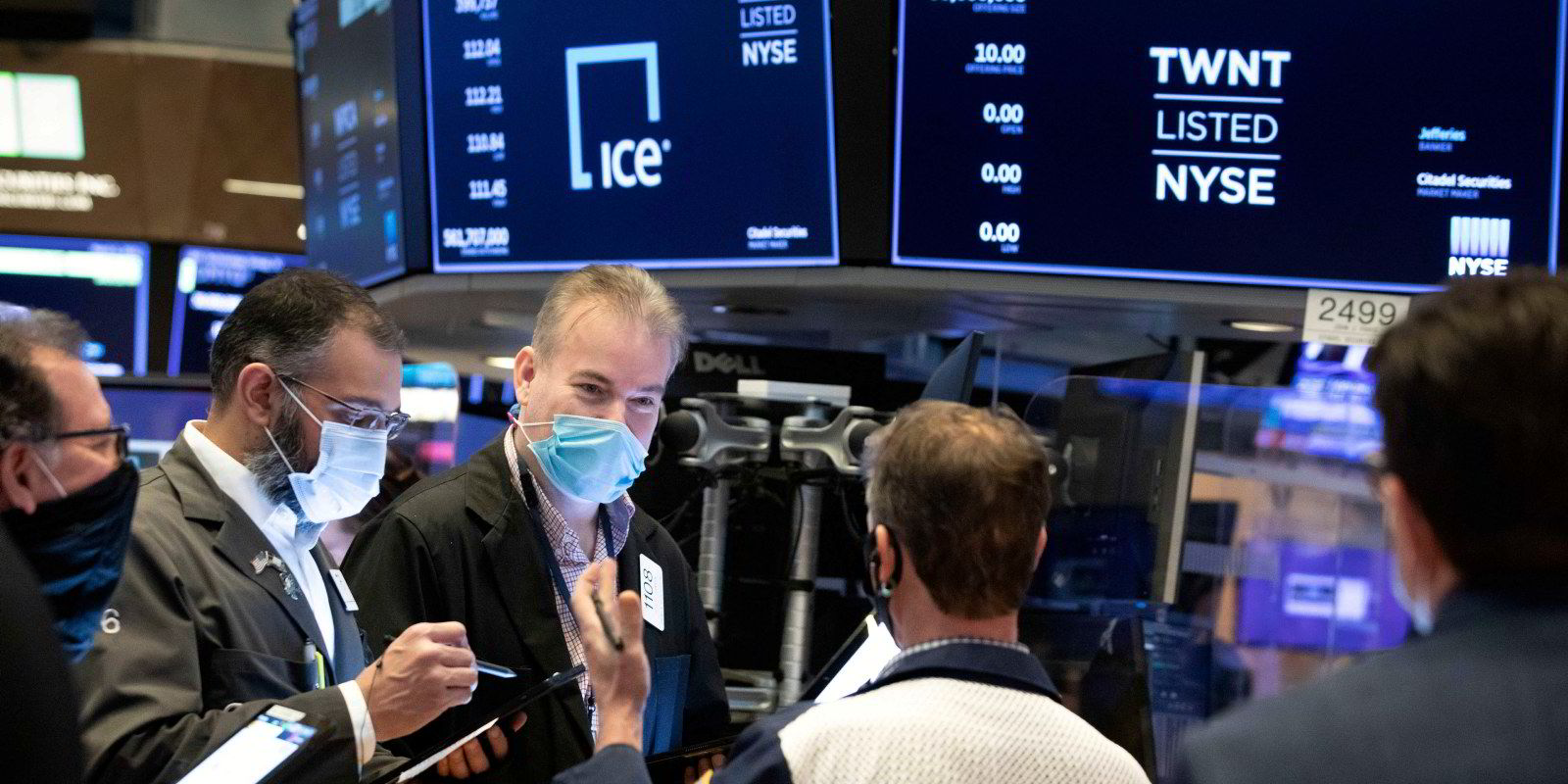US-listed dry bulk shares surged 61% in the first two months of this year, nearly doubling the 31% average gain for the 32 shipping stocks under coverage of investment bank Jefferies.
But for investors who want to take advantage of shipping’s exposure to an emerging global recovery from the Covid-19 pandemic, what can they do?
Has anyone who has not jumped on the dry bulk train already missed all the fun — and outsized profits? Is the surging sector still the place to be, or is it a smarter move to begin shifting bets into trades such as tankers, whose rates recovery is still months off in most estimates?
For Jefferies lead shipping analyst Randy Giveans, the dry bulk story is not over yet.
Giveans told TradeWinds that he is most bullish about the bulker sector, behind only containerships.
“Tanker equities have moved up much faster than asset values,” he said. “Dry bulk equities have rallied, but rates and asset values are still on the rise.
"Tanker rates will likely languish for at least a few more months. But for dry bulk, there's plenty of room to move higher from here."
'Clear outperformance'
Shipping stocks soared across the board in January and February. Of the 32 Jefferies stocks, 31 logged gains, with the average at 31.2%. This is against an increase of 2.3% for the S&P 500 and 11% for the small-cap Russell 2000 index.
"It's a clear outperformance by shipping," Giveans said.
Dry bulk nearly doubled the movement of any other operating sector. Containerships came next at 34%, followed by LNG at 25%. The tanker group’s gain of 20% was larger than only LPG carriers at 4%.
But to Giveans' point on valuations in the physical market, the tanker group is currently trading at an average 102% of net asset value (NAV), while the dry players are at 88% of NAV.
"To note, this strong equity performance has more than offset the increase in asset values. As a result, the current industry average price/NAV is 86% compared to just 75% at the beginning of the year," Giveans said, referring to numbers across all sectors.
"The biggest sector change has been in tankers, as asset values haven’t increased materially, but tanker equities have rebounded."
So, while at first glance the outsized jump in bulker stock prices might suggest the sector is overheated, the comparison to NAV hints otherwise — pointing that finger at tankers instead.
Dry bulk dominance
A look at individual companies over the two months confirms dry bulk's dominance.
Six of the top 10 gainers over the period are bulker owners, led by Greece’s Safe Bulkers at a 111.5% increase — the only triple-digit surge among the Jefferies group.
Others in the top tier include Connecticut's Eagle Bulk Shipping at 76.4%, Navios Maritime Partners at 59.7%, Genco Shipping & Trading at 54.3%, Star Bulk Carriers at 54% and Diana Shipping at 46.6%.

By the same token, big tanker names dominate the bottom time, albeit with all registering gains. These include Nordic American Tankers and DHT Holdings at 9.2%, Euronav at 11.8%, International Seaways at 13.3%, Frontline at 13.8% and Tsakos Energy Navigation at 14.8%.
With earnings season now mostly done, Giveans sees few catalysts remaining in March before the quarter closes.
'Unseasonal volatility'
“We do expect continued asset appreciation, but rates are likely to remain volatile in what is normally a seasonally soft spot of the year,” Giveans said.
"Comparing time charter rates to spot rates, clearly the market is pricing in a significant improvement in tanker, LNG, and LPG rates, whereas dry bulk and containership numbers will likely remain strong, although slightly lower than these decade high levels."
The first week of March allowed shipping to keep building on the two-month performance.
The Jefferies stocks gained an average 1.8%, with 22 of 32 rising.
Tanker shares managed to notch the best week with a 5% gain, despite the surprise news that Opec+ would essentially maintain previous levels of production cuts.
Dry bulk continued upwards, with a 3% gain amid some of the highest spot rates in a decade. But containerships cooled off to a 4% loss — the worst of the group. LNG carriers dropped 2%, while LPG owners rose 1%.




